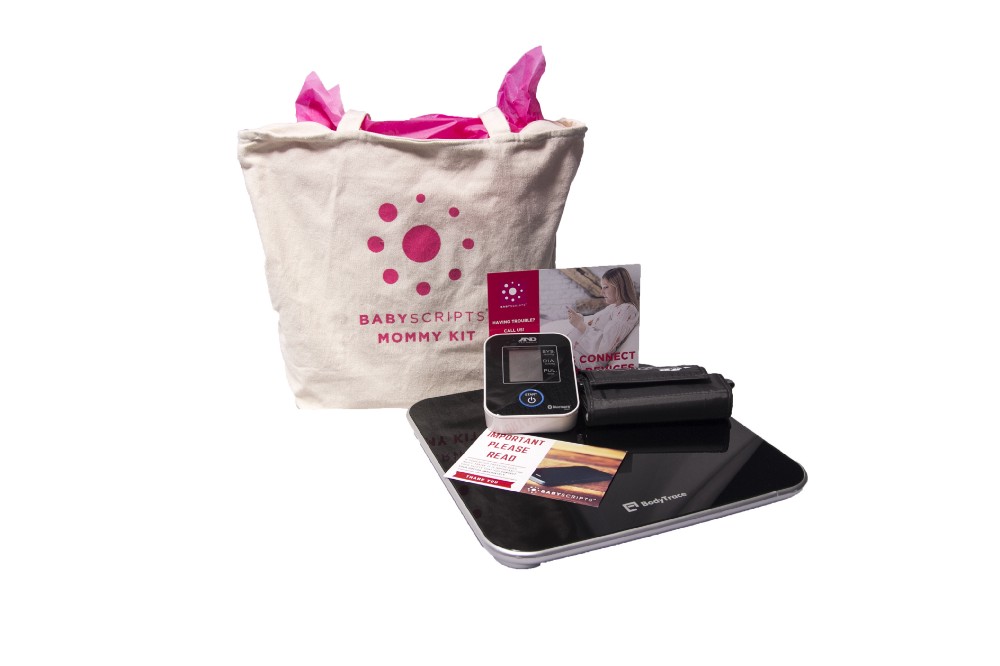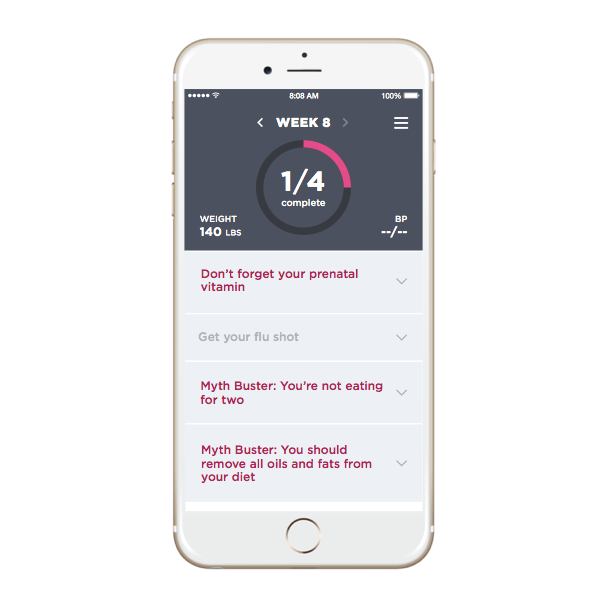
Think about this: In a typical low-risk pregnancy, a woman has physical appointments with her OBGYN about every four weeks in the first and second trimester, every two weeks in the third, until the last four weeks, when she comes in every week. If she has questions or concerns in-between appointments, she’ll have to call and wait to speak to someone or physically make an appointment to come in. This schedule has remained the same for the last seven decades.
Today, groundbreaking technology platforms are pushing for change. Patients no longer need to wait to get connected to an OBGYN if an issue comes up — someone is always there to help. And if a woman lives far from the clinic or hospital, or is busy and can’t make it in see a healthcare provider, it’s easier than ever to track her blood pressure, weight, and other vitals and to assess her symptoms without her having to leave home.

Prenatal care is transforming for the better thanks to platforms like Babyscripts, simply because pregnant women are able to increase the number of interactions they have with their OBGYN throughout their pregnancy.
That means complications are caught sooner, and they can be monitored even in between physical appointments.
Here’s a look at some common pregnancy complications, and how increased interaction with a healthcare provider can result in better birth outcomes for both mom and baby, potentially saving lives.
First trimester complications

Unfortunately, the majority of miscarriages can’t be prevented. Throughout the first trimester, however, app reminders to patients may result in a healthier pregnancy. Notifications from the app to take prenatal vitamins, folic acid, attend appointments and get a flu shot can be helpful during a busy time and result in better pregnancy outcomes in the long term.
Premature labor
Premature labor occurs in about 10 percent [1] of all pregnancies, according to the Centers for Disease Control and Prevention. Signs and symptoms including a backache or pelvic pressure might not always be obvious, especially in the third trimester. When expectant mothers are able to ask questions to their doctors via an app, it can cut down on the stress of whether they need to come in to get checked out or head to the hospital immediately. Additionally, monitoring high blood pressure [2] is an important factor in determining whether a patient needs to deliver before 37 weeks to avoid serious health problems, according to March of Dimes
Preeclampsia
Women with prior hypertension and those who are at risk of developing preeclampsia need to monitor their blood pressure throughout pregnancy, according to the American College of Obstetricians and Gynecologists. Luckily, in most cases, monitoring can be done at home using a blood pressure cuff. For a healthcare team, there are advantages to pregnant women tracking blood pressure at home. Mainly, they’ll be more relaxed at home than at the doctor’s office. Also, by measuring at the same time throughout the week, the expecting mother will get a more accurate reading. An active care team carefully monitoring her blood pressure via app or tracking device will notice patterns and be able to immediately advise should blood pressure rise to dangerous levels. Vigilant tracking, monitoring, and increased communication can help prevent and treat this dangerous condition.
Gestational diabetes
 Tracking weight along IOM guidelines
Tracking weight along IOM guidelinesA study [3] published in “Obstetrics & Gynecology” found that high rates of gestational weight gain, especially during early pregnancy, led to an increased risk of developing gestational diabetes. Having patients remotely weigh themselves and monitoring their patterns for a spike in weight gain can help prevent gestational diabetes. It can also help identify expecting mothers who need additional monitoring throughout their pregnancy.
Postpartum complications
After delivery, some new mothers may still benefit from continued communication and remote monitoring from their care team. Take, for example, the case of a 33-year-old with preeclampsia who was discharged from the hospital after a routine vaginal delivery but continued to monitor her blood pressure at home via Babyscripts. On postpartum day five, she ended up in the hospital after a trigger alert of elevated blood pressure sent notice to her care team, who recommended she come in. She was eventually given medication and sent home safely to her child.
These are just a few examples of how increased digital touchpoints with an OBGYN can minimize the risk of complications during pregnancy. For more information on how virtual monitoring apps can help achieve better pregnancies, visit our website

Submit a comment